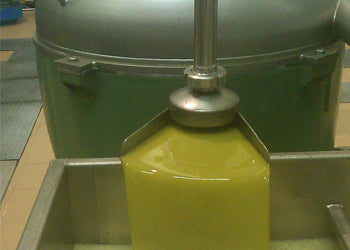
GLUTEN FREE Statement
To Whom It May Concern:
This is to confirm that the oils and balsamic vinegars supplied by Veronica Foods Company sold on this site are GLUTEN FREE Products and are produced and packaged in gluten free facilities (no products are produced or packaged in our facility which could cause gluten contamination).
This statement pertains to:
Canola Oil Extra Virgin Olive Oil Canola/Extra Virgin Olive Oil Blends Balsamic Vinegars
Read more →

Understanding Balsamic Vinegar (from the Vinegar Institute)
Traditional Balsamic Vinegar of Modena (Italy) is made from white and sugary Trebbiano grapes grown on the hills around Modena. Custom demands that the grapes are harvested as late as possible to take advantage of the warmth that nature provides there. This vinegar is made from the cooked "grape must" [the juice pressed from grapes before it has fermented; new wine] matured by a long and slow vinegarization process through natural fermentation, followed by progressive concentration by aging in a series of casks made from different types of wood and without the addition of spices or flavorings. The production of...
Read more →

What Influences Olive Oil Grade?
All olive oil starts with fruit on a tree. What happens after the fruit and the tree part company makes all the difference to the oil produced. United States Department of Agriculture the only acceptable grade of olive oil is Virgin Olive Oil per the US Department of Agriculture. The Food and Drug Administration definition is, “Olive oil is the edible oil expressed from the sound, mature fruit of the olive tree." No recognition is given to refined or extracted oil. The two ways to assess virgin olive are chemical and organoleptic analysis. They are both equally important although one...
Read more →

Timing is Everything
The most critical decision and least understood variable in producing fine olive oil is the level of ripeness of the fruit when the olives are harvested, affecting both yield and organoleptic characteristics. Additional factors of regional variations are harvest time, risk of frost and mill schedules. These all affect the quality of the finished product. Theoretically, there exists an exact moment when ripeness and acidity levels are at their respective optimums. Crushing the fruit before this imaginary "moment" or peak of ripeness will translate to a lower yield and greener tasting oil. "Grassy" or greener tasting oil is the result...
Read more →

How It Is Made
The basic procedure making olive oil has remained the same for thousands of years: harvest at the right time, crush the olives into a paste, separate solids from liquid components, and further separate the vegetable water from the oil. Extraction methods have a direct effect on the flavor and quality of the olive oil. The stone grinding and matt pressing method is still used but has the drawback of intensive labor and lower yield compared to modern methods. Olives are crushed to paste between revolving millstones and the paste is then spread on woven mats, stacked in a press and...
Read more →

Choosing the Right Olive Oil
When all the oils appear to be the same and have limited information on their labels, how do you select the right one? It is difficult to compare taste unless you have the opportunity to open several containers of oil at the same time, not something a consumer usually does. Because of this, the way olive is being sold and marketed is changing to meet consumer pressure for an educated choice, and the opportunity now exists at Olive A’Sudden for you to taste a range extra virgin olive oils, know the crush date and learn about the complete chemistry. All...
Read more →

Single Variety and Mono Cultivar
The variety or cultivar selected for planting will certainly have an effect on the overall flavor and characteristics of the oil, but the characteristics and relative merits of individual cultivars are hotly contested. Although most table fruit is unsuitable for oil production because of yield, size, and oil content there are always exceptions. This complicated subject is woven happily and inextricably into the unique fabric of the area where each olive variety is grown negating the attitude that one cultivar is superior to the rest. Variety in olive oil as in all things is indeed the spice of life. Each...
Read more →

 Tom Harper
Tom Harper